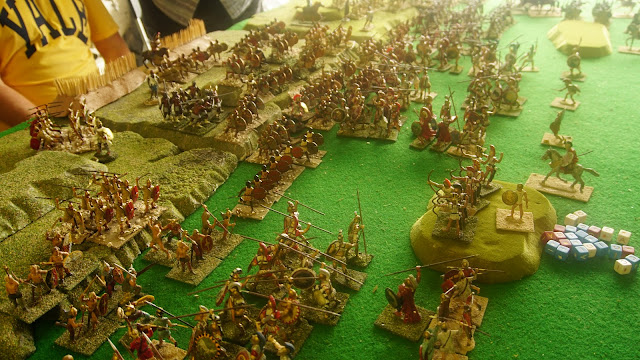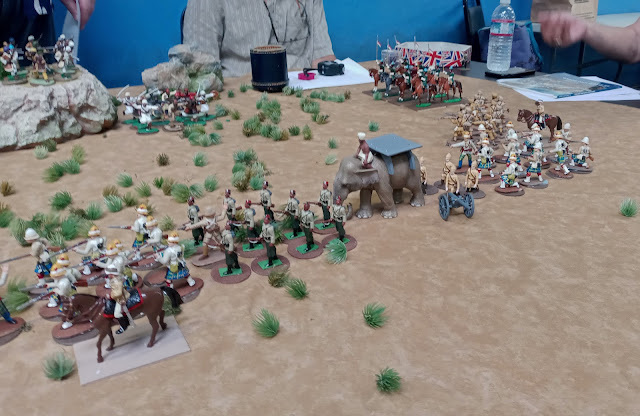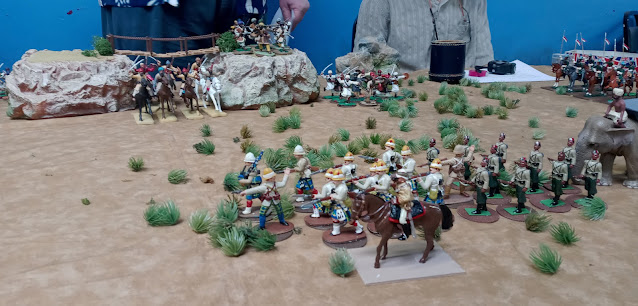Arround 750 BC the first Greek colonies were founded in Sicily, where already the Carthaginians had already trading post since 900 BC. As Sicilian trade flourished, the Greeks and the Phoenicians and the Sicilian Greeks colonies became prosperous. This prosperity enabled some of the Greek cities to start to expand their territories, at expense of the indigenous communities.
Also, Carthage expended the Phoenicians influence on the island. A cultural and economical conflict was inevitable.
Terillus, the tyrant of Himera was deposed by Theron, tyrant of Agrigentum, one of the dominant Greek city of Sicily. Terillus requested aid from Carthage.
In 480BC Hamilcar, the Cartagenian leader went to Sicily with an army of Carthaginian heavy infantry, light Libyan infantry and cavalry, Iberian medium infantry and cavalry and Gaul infantry and cavalry.
The Greeks, leaded by Gelon, King of Syracuse, and Theron, tyrant of Agrigentum, assembled a well trained and battle tested army, reinforced with mercenary hoplites, peltasts, archers, slingers and cavalry coming from other Sicilian and Italian Greek cities, as well from local and mainland communities.
The Cartagenian army besieged Himera, and the Greeks came to rescue the city. Hamilcars camp was on a hillside and they drew up their battleline there.
Carthaginians left to right: Peter with Iberian and Libyan cavalry and part of the veteran Iberian infantry.
Centre Steven : Part of the Iberian veteran infantry and the Heavy Carthaginian infantry, and Libyan light infantry
Right: Willie with medium Carthaginian infantry Libyan light cavalry and aul infantry and cavalry
Greeks: left : Thomas with the Greek medium and light cavalry and the light infantry.
Centre : Kristof 10 units of heavy veteran infantry hoplites.
Right : Alberik, also with with Greek medium and light cavalry and the light infantry.
Kristof dispatched 3 units towards Thomas to reinforce his lines against the Gaul impact troops.
On both wings, the cavalry opened the battle.
Thomas started to harass the Gauls with his light infantry.
In the centre, the hoplites pushed away the light infantry but took some losses, and was charged on several places by the Iberians and Carthaginian heavy infantry.






On both wings, on both sides, cavalry units were lost. The Greek left was charged by the Gaul infantry, with a light unit destroyed, but the Hoplites stopping the breakthrough.
By now, the Carthaginian right and the Greek left were on breaking point (another unit lost would bring their number of units below 50%). In one ongoing cavalry melee, on both sides the unit was almost broken… Willie added has general to the melee to boost the number of dice and to even the odds. And indeed both units were removed from play, both wings had broken.
To the relief of Kristof, who could now call his despatched units back to the centre which had come under pressure due to superior numbers of the Carthaginian Iberian forces.
But on the Carthaginian right, Peter also came under pressure and nearing breking point.
Alberik kept on pushing and some desperate charges of Peter with his light cavalry and almost destroyed medium cavalry did not turn the odds, his wing was also broken resulting in a Greek victory.
Historically, the battle was also a Greek victory, with Himilcar death.
In the aftermath, Carthage even feared a Greek attack on the city, but both sides came to terms, with a status quo in the region. Carthage would turn its focus for the next 70 years on Noth Africa. Greek Culture and trade flourished.







































